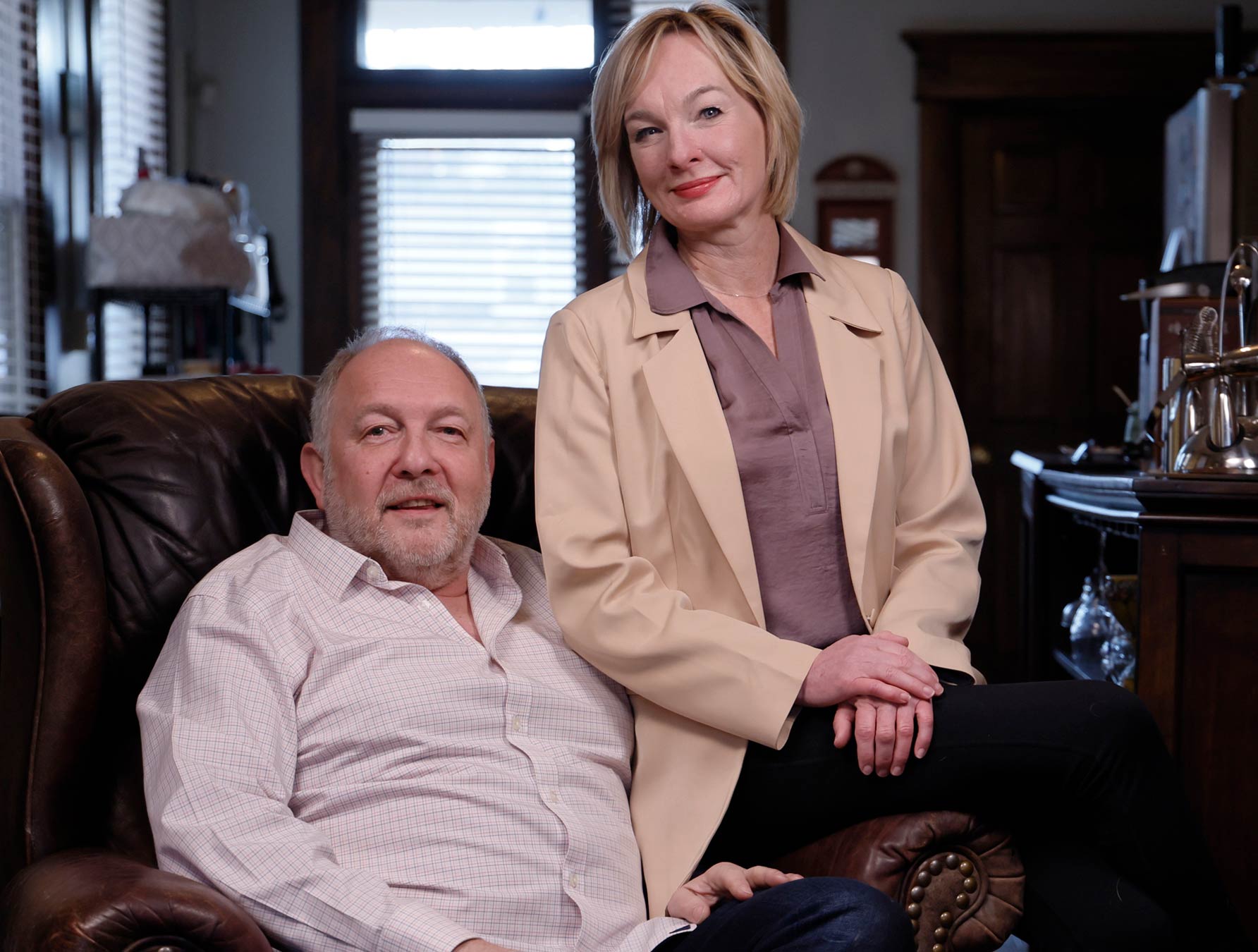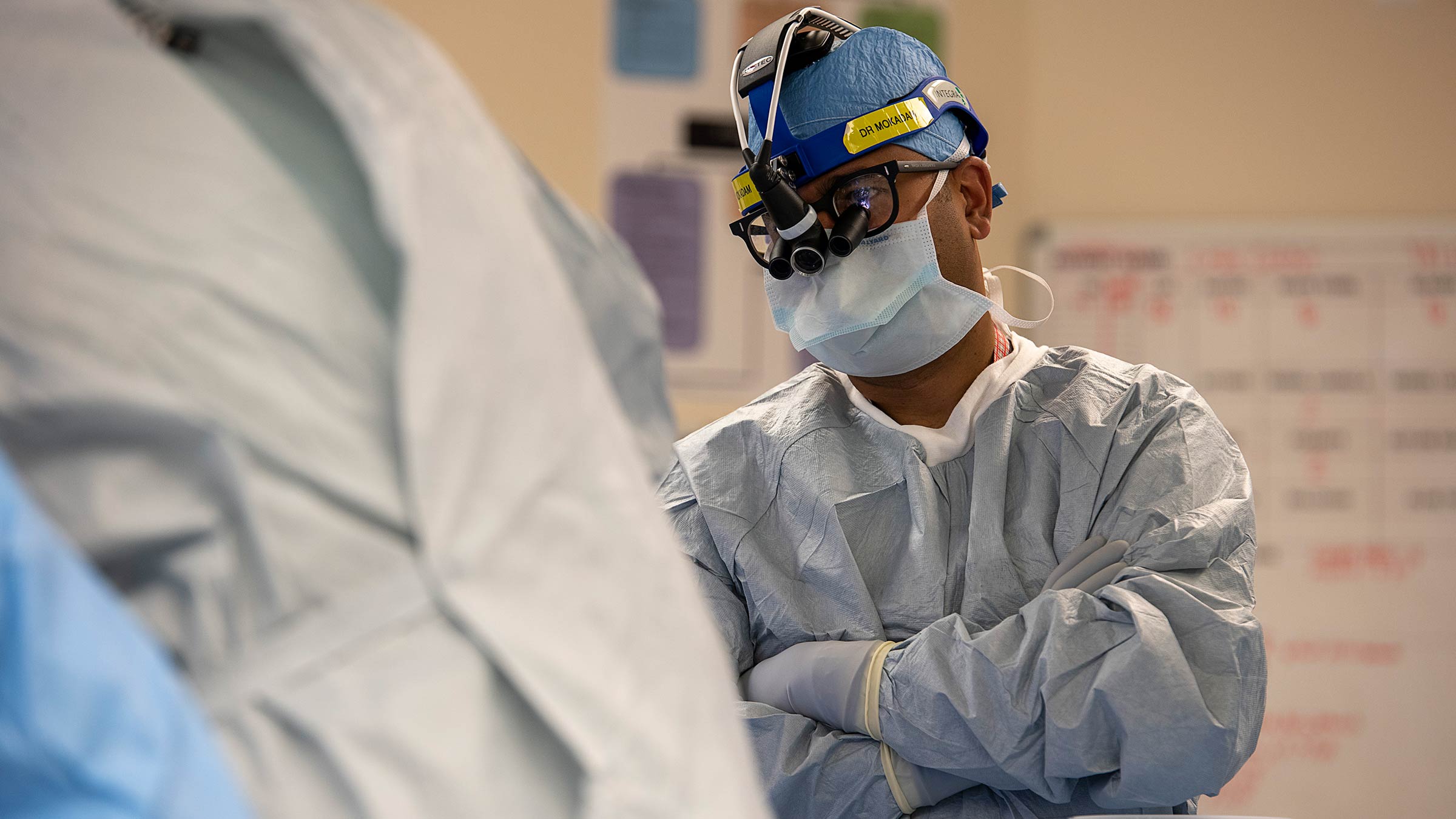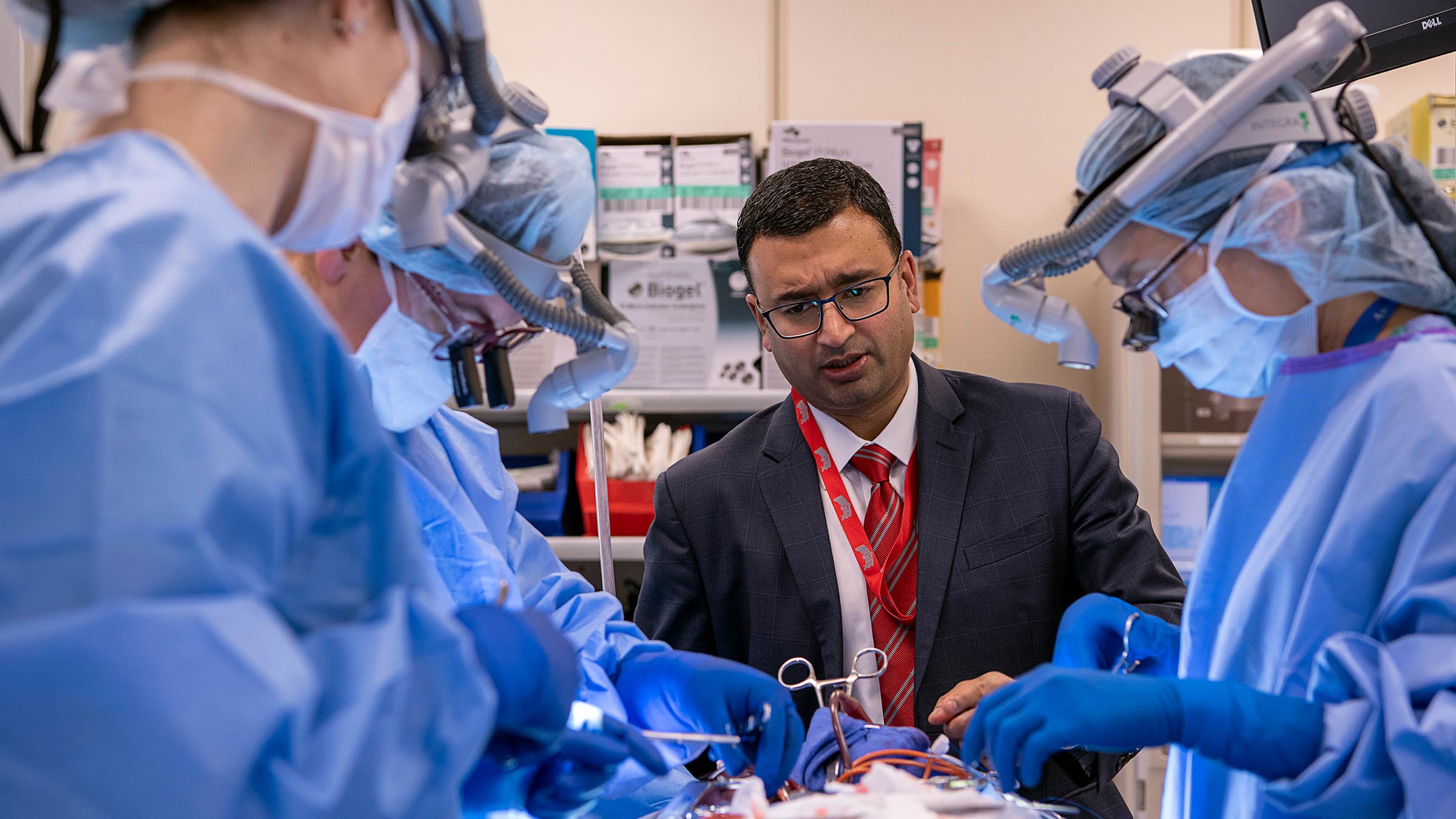
Your heart is in the right place
Learn more about advances in care and treatment for patients at The Ohio State University Heart and Vascular Center
Expert care starts here Your source for health, wellness, innovation, research and science news from the experts at Ohio State.
Your source for health, wellness, innovation, research and science news from the experts at Ohio State.
There’s a powerful story behind every headline at Ohio State Health & Discovery. As one of the largest academic health centers and health sciences campuses in the nation, we are uniquely positioned with renowned experts covering all aspects of health, wellness, science, research and education. Ohio State Health & Discovery brings this expertise together to deliver today’s most important health news and the deeper story behind the most powerful topics that affect the health of people, animals, society and the world. Like the science and discovery news you find here? You can support more innovations fueling advances across medicine, science, health and wellness by giving today.
Subscribe. The latest from Ohio State Health & Discovery delivered right to your inbox.
SubscribeSurgeon Nahush Mokadam, MD, is using new techniques and training the next generation of cardiac surgeons.
Steve Eastwood knew something was wrong in 2021.
Amid the COVID-19 pandemic, the 56-year-old native of England living in Columbus had begun working out more but felt his health declining, not improving. He was out of breath periodically and had persistent feelings of indigestion.
His primary care physician referred him to a cardiologist, who did a stress test. It lasted 30 seconds before the doctor flagged an issue.
Eastwood had a thickening of the heart muscle. In his case, the middle of his heart had thickened and was blocking blood flow through his aortic valve.
Eastwood and his partner, Cherie, were referred to cardiac surgeon Nahush Mokadam, MD, for a surgical consultation at The Ohio State University Wexner Medical Center.
“The first feeling is a slight disbelief, an out-of-body experience, until you start with somebody who is explaining what is actually happening,” Eastwood recalls.
“The following stages are, I would say, panic at first, and then sort of a realization that you have no choice. You’ve got to get this done.”
In Eastwood’s case, “this” meant a septal myectomy — an open-heart surgery that involves a surgeon cutting out the thick part of the heart to restore blood flow.
“It's a difficult operation, and it’s one that’s difficult for many reasons,” says Dr. Mokadam, a cardiac surgeon at The Ohio State University Wexner Medical Center who holds the Gerard S. Kakos, MD, and Thomas E. Williams Jr., MD, PhD, Professorship at The Ohio State University College of Medicine. “One, there’s a lot of important parts of the heart right next to the septum that make it very challenging and very dangerous. The electrical system of the heart is right there. You can cause a connection between the heart that you don’t want to.
“One of the blood vessels to the heart is right there. If we are not careful and do this properly, we can run into a lot of trouble.”

Though he entered the meeting feeling frightened, Eastwood was immediately struck by Dr. Mokadam’s straightforward, confident approach, which carried through Eastwood's surgery and recovery.
That confidence would be called on again when just over a week after the procedure, Eastwood told Cherie the pain was unbearable.
“Dr. Mokadam came in,” Cherie recalls, “and I said, ‘I don’t know what to do for him. He’s given up.’”
Cherie was relieved not only by his data-driven response as to why her partner would be OK, but also his compassion.
“Dr. Mokadam said to me, ‘I’m telling you I will get him through this. I will get him through it. Say the right things, hold his hand.’ He literally looked me in the eye and said, ‘I’ve got this.’”

“He’s a reserved gentleman, but he was someone that you could trust,” Cherie (pictured with Steve) says of Dr. Mokadam.
“He’s someone who had empathy and someone who looked at the patient holistically and understood the importance of the caregiver being informed and supported,” Cherie says.
“He finished by stepping towards Steve and saying, ‘If you can’t hear yourself in your head, I want you to hear me in your head. This will pass. You will be better.’”
Eastwood has recovered from the procedure, one that he’s tremendously grateful to have completed under Dr. Mokadam’s steady hand.
“He’s a very talented person; I couldn’t do what he does for a living,” Eastwood says.
“It’s an art form.”
Dr. Mokadam, who was born in India and immigrated with his family to New Jersey when he was 1 year old, had extensive exposure to science and medicine growing up.
Grandparents on both sides of his family served as professors in Mumbai. His mother was a medical physicist and his father was a trained general surgeon who worked in an emergency department after immigrating to the United States.
“I grew up knowing I wanted to be a doctor. I said that from first or second grade,” Dr. Mokadam says.
Initially Dr. Mokadam was interested in plastic surgery, but after his father’s diagnosis of cardiovascular disease, he shifted his focus to cardiothoracic surgery.
But the journey was hardly a straight line.
“When I started my residency, I spent a lot of time trying not to be a cardiothoracic surgeon,” Dr. Mokadam says. “I think because I recognized that the time and life commitment in cardiac surgery was intense, and it would potentially have an impact on my family life and interests outside the hospital.”
By this time he had married his wife, Sunita — the couple met at a party in Philadelphia as undergraduate students at the University of Pennsylvania years earlier. (“I went on my last first date when I was 19,” Dr. Mokadam recalls fondly.)
It was a conversation with Sunita that convinced the young doctor to follow his passion.
“Of course, it always takes your spouse to point out that you’re being irrational. She said, ‘It doesn’t matter what you do. You’re going to work hard, and there’s nothing I can do to stop you. So, you might as well do what you like, instead of what you think I’ll like better.’
“Very smart. Very smart woman. So that sort of opened the doors to say OK, I can do this, and we’re going to get through this together.”

After completing residency at Washington University in St. Louis, Dr. Mokadam spent 11 years at the University of Washington, ultimately serving as director of the training program for cardiac surgeons finishing their advanced training. In 2018, he learned that The Ohio State University Wexner Medical Center was looking for a new leader for its Cardiac Surgery division. Since seizing the opportunity, he has been at the forefront of advancements to help heart patients.
His team at the Ohio State Richard M. Ross Heart Hospital performs more than 1,000 cardiac operations per year, and he has performed several thousand in his career as a surgeon.
In 2021, he helped perform the first heart transplant in central Ohio that utilized a novel organ monitoring system. This “heart in a box” technology allowed surgeons to retrieve a donor heart from outside Ohio and keep it viable long enough to save the life of a patient at the medical center. Ohio State is one of 18 sites in the country participating in a clinical trial to test the effectiveness of this technology.

Dr. Mokadam is also an expert in the implantation of total artificial hearts, a life-extending technology that can help bridge the gap until a donor heart is available for transplant. These devices replace the ventricles in the heart and can buy a patient up to four more years until a match can be found.
In addition to the hands-on instruction he provides in the operating room, he also serves as director of the integrated cardiothoracic surgery residency program at Ohio State. He oversees a pool of up to 150 applicants per year for one highly competitive position that lasts six years.
Those residents train on an advanced cardiac simulation machine, where they can practice such procedures as bypass or valve replacement. Dr. Mokadam helped author the curriculum used in the training, which involves high-tech manikins, “stage blood” — and even pig hearts, which are anatomically very similar to human hearts. The machine also can replicate a surgical problem, giving trainees an opportunity to sharpen their skills before applying them to human patients. Ohio State is among a small number of centers to offer this technology.
All these educational initiatives are designed to make better cardiac care possible, Dr. Mokadam says.
“One of the most satisfying things I get to do, separate from patient care, is to have my team develop and become better than I am,” Dr. Mokadam says. “That means my resident trainees, junior faculty, administrative staff, nurse practitioners and physician assistants — the overarching goal is to raise the boat for the whole team.
“It’s satisfying to be able to develop our team to the point where they can make the next step. That’s what I really aspire to.”
Within a cabinet behind his desk at his office in Doan Hall, he keeps a collection of mementos that attest to the effect he has had on his patients — a stack of personal notes from those whom he has treated.
“The thing that’s really powerful about what I do — it’s one patient at a time,” Dr. Mokadam says. “It’s the one that’s in front of you today and being able to make a difference in that individual’s and family’s life one day at a time that is really meaningful.
“It’s that individual connection and relationship you have with each patient that fills your cup.”

Learn more about advances in care and treatment for patients at The Ohio State University Heart and Vascular Center
Expert care starts here